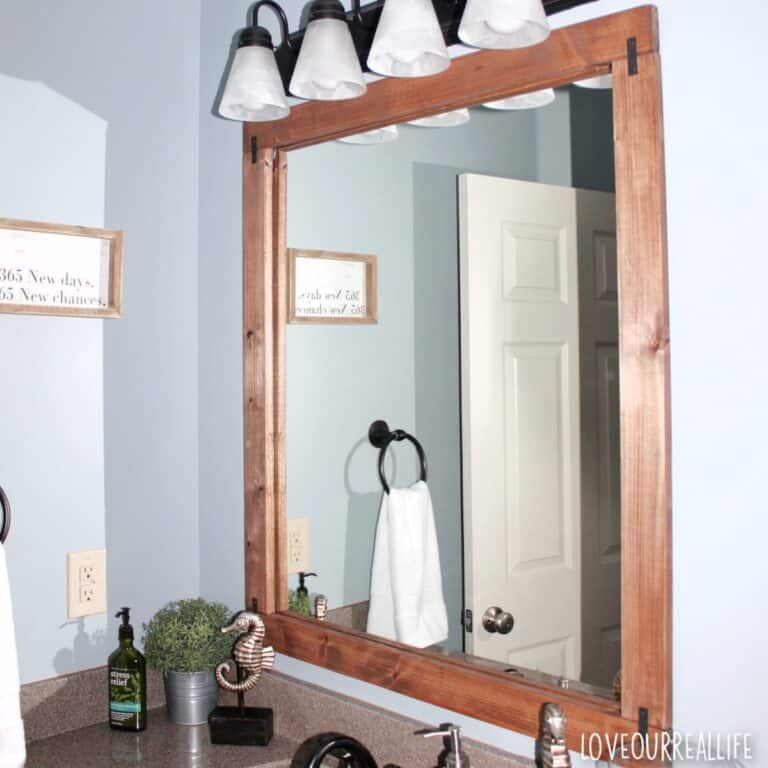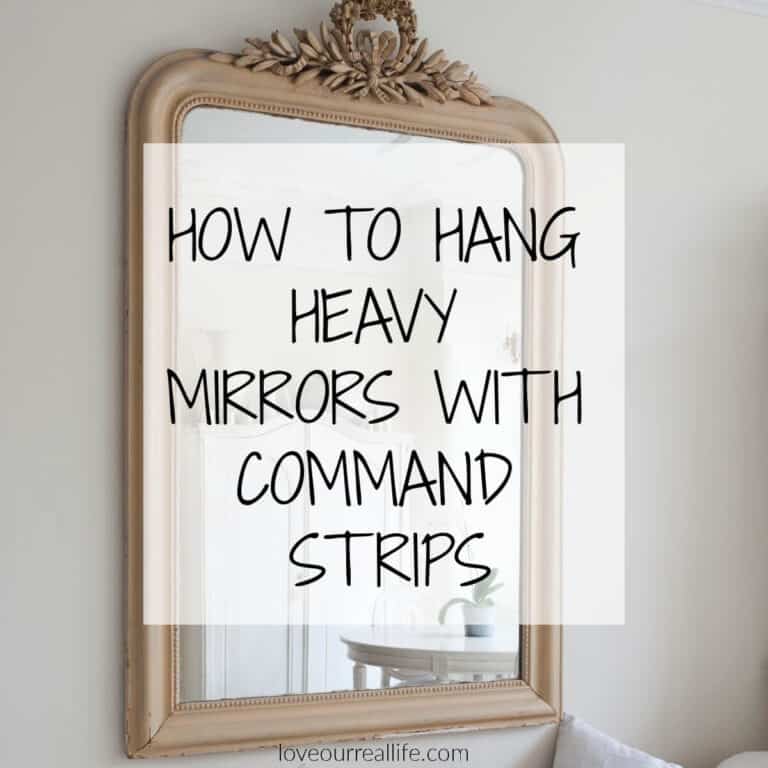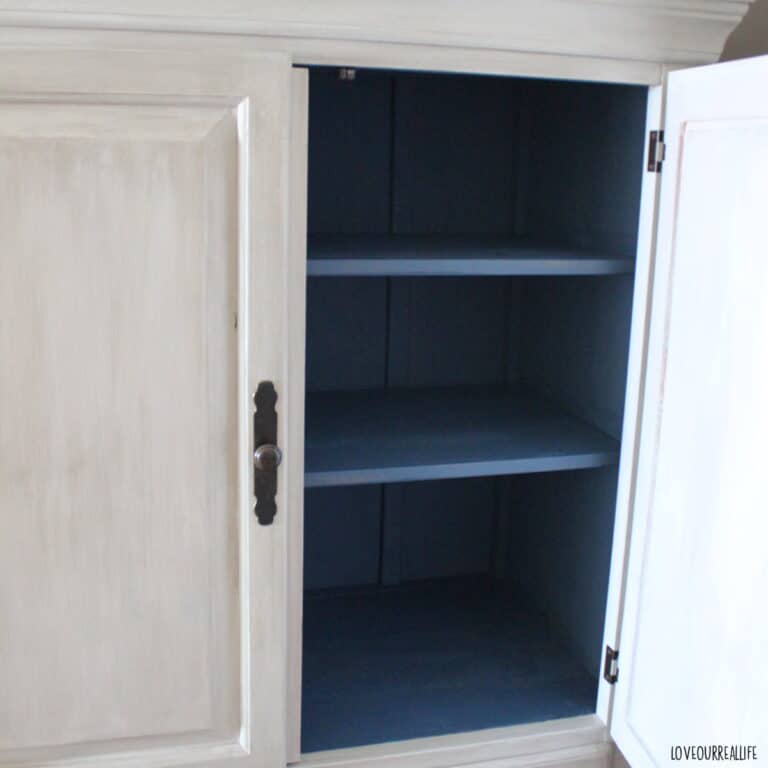5 Best Basket Weaving Materials
Basket weaving goes back for several centuries. These days, it’s a wonderful pastime that produces useful storage solutions. Whether you’re a first-time weaver or you’re trying to broaden your horizons, you’re in the right place to find the perfect natural materials for this fun hobby.
The best basket weaving materials include bamboo, reeds, honeysuckle, vines, and different types of grass. You should make sure that the material is strong, dense, and long-lasting. Anything that dries out quickly or becomes brittle won’t do. Each material has its own pros and cons, though.
Get more diy and craft ideas here.
Throughout this article, you’ll also learn the following info about basket weaving materials:
- The advantages and disadvantages of different materials
- How you can grow all-natural basket weaving materials at home
- How to choose the best materials for you
Using Grass to Weave Baskets
When you’re using grass to weave a basket, it’s important that it’s thick, dry, and long. It should be about 9 to 12 inches for the best results.
As mentioned by Craft Labrador, you can make a high-quality basket with nothing other than Sea Grass, scissors, and a needle to thread it all together.
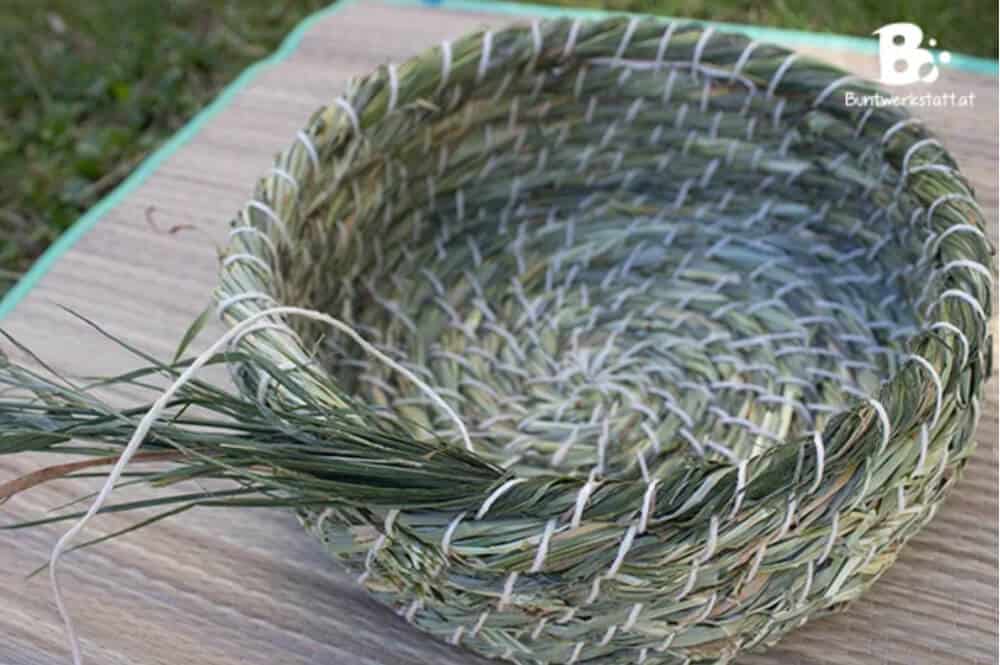
You’ll need to start by holding five blades of grass together, then weaving the flexible fibers around one another. The reason that grass works so well is that it dries quickly without losing its strength.
In fact, moisture in living grass can often cause it to bend and break, making it useless for basket weaving.
People who don’t have access to most of the other materials on this list might find it easiest to use grass.
The most important thing is that you give it enough time to grow and dry out. It’ll be very difficult to weave short, hydrated blades of grass!
Is Bamboo Really One of the Best Choices?
Bamboo is often known as one of the toughest materials in nature. It can withstand harsh weather, tension, and bending without breaking.
However, if you’re able to thinly slice the sticks of bamboo, you’ll be able to make top-notch baskets.
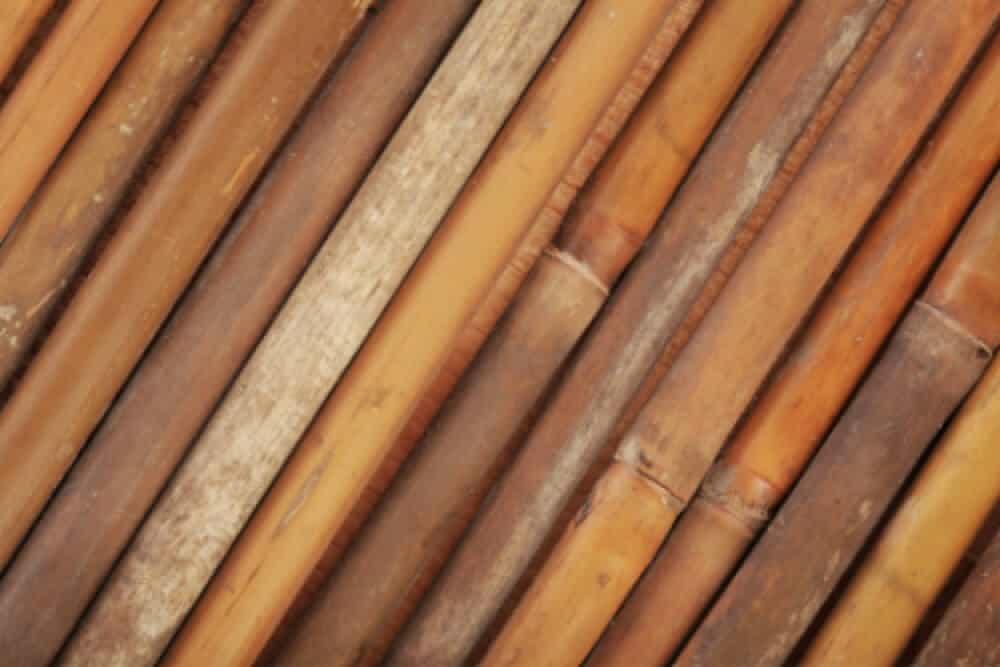
Get a long piece of bamboo and use a sharp knife to scrape off thin strips. Much like the previous material, you’ll need to bunch a few strips together to start weaving.
Since bamboo is fairly dry already, you can start weaving without waiting for it to dehydrate.
If you make a bamboo basket with thick strips, you can expect it to last longer and hold more. It’ll also have a higher weight capacity, which is essential if you want to make a business selling bamboo baskets.
We might not all have access to bamboo, but for those who do, it makes wonderful baskets and strong wooden bases.
Consider Vines for Your Basket-Weaving
Whether you have wild vines growing on the side of your house or there’s a local supplier, they can make excellent baskets. You can weave vines fairly easily.
The best part is that this natural fiber doesn’t require any tools other than some scissors and your hands.
Start by cutting the vines down to size, then wrap them together. Some vines tend to be quite bulky, so you can either choose smaller vines or slim them down a bit with a knife.
The final result should be about ½ of an inch or thinner.
There are countless weaving techniques that can be used with vines, so weaving shouldn’t be an issue.
The only problem is that it’s not quite like traditional weaving in the sense that the basket is often finished quicker.
If you want to spend hours creating an intricate design, vines might not be for you.
Much like bamboo strips, vines create a strong, durable hold for the materials inside of the basket
Reeds Make Excellent Baskets
Paradise Fibers suggests using reeds for basket weaving. Since they’re wide, long, and malleable, reeds are often one of the best locally-sourced choices for basket weavers.
If you live near a place that grows reeds, then you can use the dried plants to put a basket together.
You can choose to weave the reeds together in thin strips or as they come off of the plant.
The thin pieces allow for more details and a stronger hold, but thick reeds that aren’t cut are usually easier to weave.
The best way to prepare reeds for basket weaving is by placing a few of them in hot water, then setting them out to dry in the sun. This process will remove the water from the reeds, allowing them to dry without cracking.
Find flat reed options for basket makers on Amazon. Note Amazon carries flat oval reed as well as round reed.
Honeysuckle Plants Are a Top Choice
Honeysuckle plants grow vines that are perfect for basket weaving. They’re naturally thin and strong, allowing you to manipulate them without much struggle.
As with most other types of basket weaving, you should start by wetting the vines and drying them in the sun.
Once the honeysuckle vines are dried, you can cut them down to the preferred size and begin wrapping them together.
Remember that you should remove all of the flowers and leaves, but you can keep a few of them if you want the aesthetic.
Nonetheless, it’s more than likely that they’ll fall off or dry out in the process.
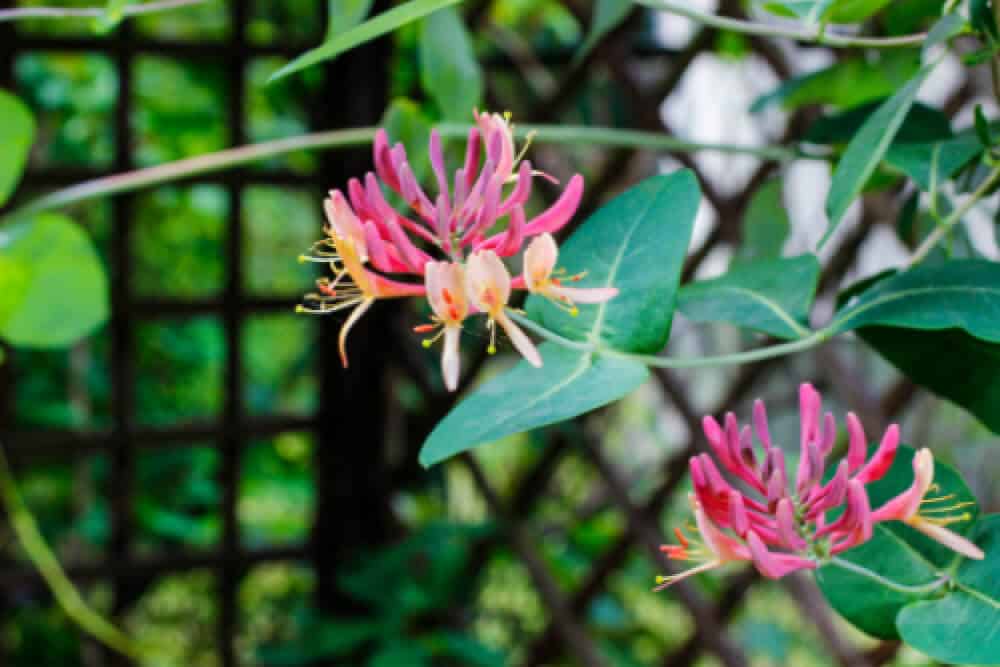
According to Matt Tommey, winter is the best time to harvest honeysuckle vines since they don’t harbor many critters.
How Do You Choose Basket-Weaving Materials?
Basket weaving materials can be found all over the place. For most traditional materials, you can buy them in a store, online, or grow them in your garden.
This section will cover the basics of what you should choose for the type of basket you will be making and what to look out for when you’re getting the best basket weaving materials for your next project.
Here’s a list of things to remember when choosing basket weaving materials to make your own basket:
- What are the dimensions of your basket? Shape of the basket? If you want to make a small basket, then you don’t need to reach for two-foot vines or massive reeds. The size of your materials should accommodate the size of the basket you want to make. Remember that thicker and thinner materials will adjust the appearance and structural integrity.
- What kind of materials are near your home? If you’ve never weaved a basket and you just want to get started, then use anything that you can get your hands on. Grass is accessible almost anywhere; All you have to do is let it grow long enough for a small basket and you can start weaving.
- Do you want to get a beginner kit? You can find dozens of kits online, such as the Commonwealth Basket Round Reed, that come with different materials you need to start weaving baskets from home. This particular kit comes with reeds that measure 2.25mm by 750 feet. You could also try the Commonwealth Basket Basketry Tool Kit, which comes with measuring, cutting, and fitting tools.
As you can see, there’s not too much planning that goes into choosing the right basket weaving materials.
As long as they’re readily available and the right size, you’ll be able to make a high-quality basket in no time.
Other materials used for basket weaving include pine needles, cedar bark and other various tree bark, spruce root, sweet grass, strips of wood, as well as various synthetic materials.
The key to basket making is creating a sturdy base and have a proper weaving technique with a tight weave.
Different types of basket making have been around for a long time! There are different ways to create a finished product in different styles and even bright colors!
A good place to start is finding a beginners guide with tips on making a simple basket.
It’s also a good idea to watch videos on the process to ensure you have simple tools and the type of material you need to make things go more smoothly.
After that, you’ll be hooked.
Natural Basket Weaving Materials
Still looking for more basketry materials made from natural fibers?
Natural basket weaving materials have been used by various cultures for centuries to create beautiful and functional baskets. These materials, sourced from nature itself, offer a unique and sustainable alternative to synthetic fibers.
One popular natural material used in basket weaving is rattan. Rattan is a type of palm tree that grows in tropical regions and its flexible stems are perfect for weaving intricate patterns.
Another commonly used flexible material is willow branches.
Willow trees are known for their pliable branches which can be easily bent and shaped into different forms. The flexibility of willow allows weavers to create a sturdy woven basket that can hold heavy objects without breaking.
In addition to rattan and willow, a variety of materials like bamboo, seagrass, and sisal are also popular choices for diy basket weaving.
Basket Weaving
Basket weaving is an ancient craft and art form that has stood the test of time, with its origins dating back thousands of years. Different skills levels can enjoy making different types of baskets.
From simple and functional baskets to intricately woven works of art, this traditional practice has evolved into a beloved form of artistic expression.
By using natural materials such as grasses, reeds, and vines, skilled weavers are able to create beautiful and sturdy containers that serve a multitude of purposes.
The process of basket weaving begins with gathering the necessary weaving material from nature.
Weavers carefully select plants that possess the right qualities for their desired outcome – flexibility, strength, and durability.
Conclusion
Basket weaving should be about the process, not worrying too much about gathering the right supplies.
Once you’ve narrowed your focus to one of the aforementioned materials, you’ll be one step closer to making beautiful baskets that can be used in various ways throughout your home.
Here’s a quick recap of the post:
- Grass, bamboo, reeds, vines, and honeysuckle plants are the best basket weaving materials.
- Always dry the materials before you start weaving them together.
- Consider using store-bought materials for your first few baskets.
- Make sure the plants are long enough to weave and overlap multiple times.
Other DIY Projects:
How to Update Old Baskets with Driftwood Stain
5 Tips for Designing a Vignette
Time Zone Clock Wall
Pressed Leaves in Frames

